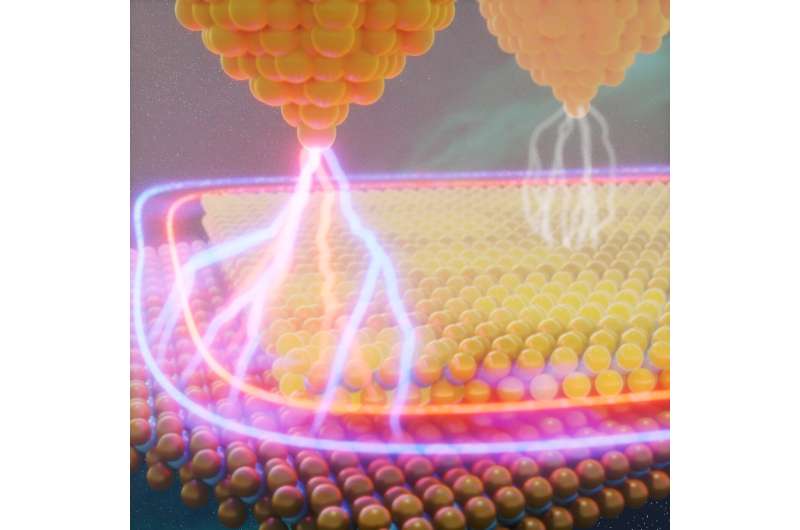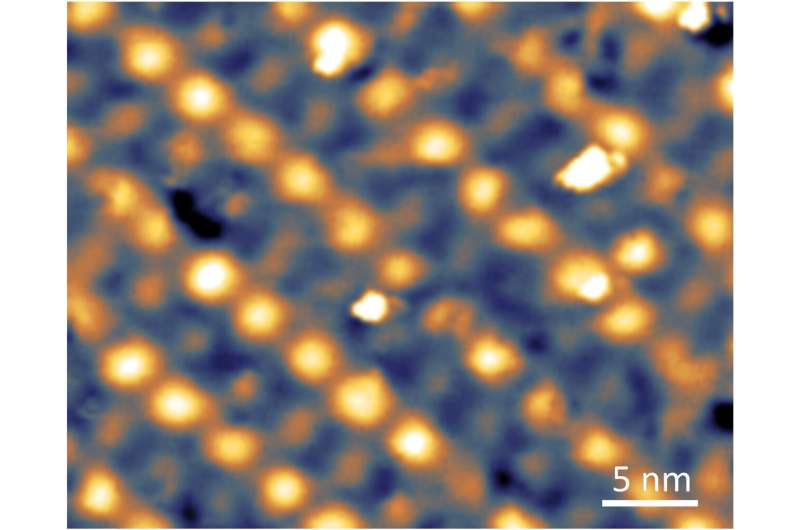
Tungsten di-telluride (WTe2) has recently proven to be a promising material for the realization of topological states. These are regarded as the key to novel “spintronic” devices and quantum computers of the future due to their unique electronic properties. Physicists at Forschungszentrum Jülich have now been able to understand for the first time how the topological properties of multilayer WTe2 systems can be changed systematically by means of studies under a scanning tunneling microscope. The results have been published in the journal Nano Letters.
Topological insulators became known beyond expert circles thanks to the 2016 Nobel Prize in Physics. However, their research is still quite in its beginnings, and many fundamental questions remain unanswered. One of the distinguishing features of the compound WTe2 is that it exhibits a whole range of exotic physical phenomena depending on its layer thickness. Atomically thin layers are insulating on the surface, but due to their crystal structure they exhibit so-called topologically protected edge channels. These edge channels are electrically conductive and the conduction depends on the spin of the electrons. If two such layers are stacked on top of each other, crucially different interactions occur depending on how the layers are aligned.
If the two layers are not aligned, the conductive edge channels in the two layers interact only minimally. However, if they are twisted by exactly 180°, the topological protection as well as the edge channels disappear and the entire system becomes insulating. Furthermore, with a minimal twist of only a few degrees, a periodic superstructure, a so-called moiré lattice, forms, which additionally modulates the electrical conductivity. Researchers at the Peter Grünberg Institute (PGI-3) have now been able to study these properties locally on the atomic scale for the first time using a scanning tunneling microscope giving crucial insights into the interactions between the layers.

More information:
Felix Lüpke et al, Quantum Spin Hall Edge States and Interlayer Coupling in Twisted Bilayer WTe2, Nano Letters (2022). DOI: 10.1021/acs.nanolett.2c00432
Journal information:Nano Letters
Provided by
Forschungszentrum Juelich

READ MORE
The World’s Most Ancient, Elusive Sharks Were Finally Caught on Video
A large female Greenland shark observed near the community of Arctic Bay, Nunavut. Brynn Devine, [...]
A new world record for the conversion of solar energy to electricity using quantum dots
The development of next generation solar power technology that has potential to be used as [...]
Song and Dance Man
What do dancing and scientific research have in common? “Creativity,” says Jarvis (performing in high [...]
Should We Fall Out of Love with Robot Surgery?
A da Vinci robot zeroes in. Photo courtesy of Intuitive Surgical Last fall, shoppers outside [...]
How Krispy Kremes Work
Krispy Kreme Steve Snowden/Getty Images Entertainment/Getty Images In the Southern United States, sweets fans have [...]
Wider horizons for highly ordered nanohole arrays
Scanning electron microscopy images of newly fabricated highly ordered nanohole arrays in tungsten, iron, cobalt [...]
Why Amazing Discoveries About Bear Hibernation May Help Improve Human Health
Visible in the entrance to their den are a mother black bear, who has been [...]
Hisashi Ouchi Suffered an 83-day Death By Radiation Poisoning
Hisashi Ouchi was a handsome, powerfully built, former high school rugby player with a wife [...]